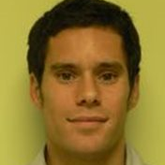Dr.Jordi Cruz Sanchez

Science Department - Academic Area
Email: jcruz@euss.cat
Office: Desp. professors (DT14)
Phone: +34 935039151
EUSS Address: Escola Universitària Salesiana de Sarrià
Pg. Sant Joan Bosco, 74 - 08017 Barcelona
Telf: +34 932 805 244 - Fax: +34 932 806 642
Academic CV
Doctor/a en Química
(2010, Universitat Autònoma de Barcelona)
Màster Oficial en Ciència i Tenologia Químiques
(2007, Universitat Autònoma de Barcelona)
Llicenciat/da en Química
(2005, Universitat Autònoma de Barcelona)
Acreditations
Report for Tenure-track lecturer of private university
(10/04/2025, Agencia Nacional de Evaluación de la Calidad y Acreditación)
Tenured assistant lecturer
(10/04/2025, Agencia Nacional de Evaluación de la Calidad y Acreditación)
Report for Tenure-track lecturer
(12/01/2012, Agència per a la Qualitat del Sistema Universitari de Catalunya)
Positions
Cap del Servei de relacions internacionals
Social and researcher networks
Orcid
GoogleScholar
ResearchGate
Web of Science ResearcherID
ScopusAuthorID
LinkedIn


